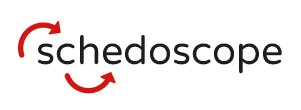-
Notifications
You must be signed in to change notification settings - Fork 28
Starting Schedoscope
Schedoscope operates as a REST web service. There are three ways of launching this service.
The simplest way of launching the Schedoscope web service is by executing org.schedoscope.scheduler.rest.server.SchedoscopeRestService's main method. After launch, the service expects [scheduling commands](Command Reference) via the [REST API](Schedoscope REST API). The [Schedoscope REST Client](Command Reference) can be used to issue these.
The Schedoscope web service needs a logback configuration file and a Schedoscope configuration file. These can be passed using the system properties -Dlogback.configurationFile and -Dconfig.file.
Example:
java -cp ${CP} -Dlogback.configurationFile=logback.xml -Dconfig.file=schedoscope.conf org.schedoscope.scheduler.rest.server.SchedoscopeRestService
The Schedoscope web service can also be launched in such a way that it opens up a command shell on the console in addition to exposing the HTTP API. This shell allows for the comfortable issuing of [scheduling commands](Command Reference) and features a command history.
Opening the shell triggered by passing the --shell parameter.
Example:
java -cp ${CP} -Dlogback.configurationFile=logback.xml -Dconfig.file=schedoscope.conf org.schedoscope.scheduler.rest.server.SchedoscopeRestService --shell
The Schedoscope web service can also be started as a daemon using jsvc and Apache Commons Daemon.
Example:
jsvc -cp ${CP} -Dlogback.configurationFile=logback.xml -Dconfig.file=schedoscope.conf org.schedoscope.scheduler.daemon.SchedoscopeDaemon
